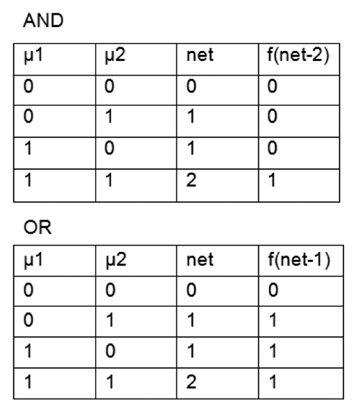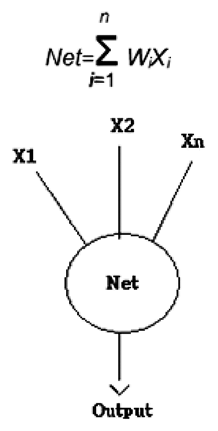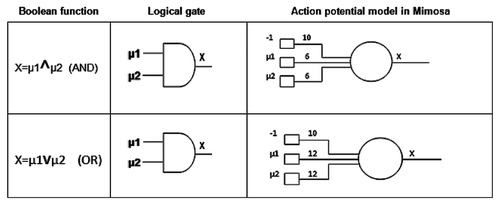Abstract
Seismonastic or thigmonastic movements of Mimosa pudica L result most from the fast loss of water from swollen motor cells, generating temporarily collapse of cells and inducing quick curvature in the parts where they are located. Because this simple reason, this plant has been much studied since the 18th century, leading us to think about the classical binomial stimulus-response (action-reaction) compared with animals. Mechanic and electrical stimulus were used to investigate an analogy of the mimosa's branch with animal's neuron models. Mechanic and electric stimuli were tested to observe the action potential propagation through the mimosa's branch. Boolean function applied to the mimosa´s branch in analogy with an artificial neuron model is one of the peculiarities of this interesting plant in our hypothesis.
Results
According to a literature describing the turgor pressure of guard cells (e.g., the turgor pressure of pulvinar motor cells), there is a swift loss of turgor in 1 s and a recovery period of 30 min.Citation1 The movements in question is very susceptible to changes in hydration of plants. The leaflet position depends on circadian rhythm of Mimosa pudica (staying closet at night). The movement of the petiole seems to respond similarly to stimuli during the day and night; however, to avoid confounding factors, the experiments were performed trying to maintain similarity in the hydration of plants, luminosity, and the period of the day (during the morning in our case). An intentional sampling of three adult plants (lifetime greater than 6 months) and three newborn plants (lifetime around 50 days since the plantation) was carried out. A significant difference was observed in the regress time of petioles of adult and newborn plants after mechanic stimuli. The number of tests with mechanical stimulation was 102 in the adult and newborn plants (34 tests were performed on each individual).
By timing the visual movements of mimosa, we obtained the following results:
Adult plants: average falling of the petiole after mechanic stimuli (average in seconds): 1.4 s, standard deviation = 0.13 s; regress of the petiole after mechanic stimuli (average in seconds): 1,908 s, standard deviation = 186 s; leaflets closing up after mechanic stimuli (average in seconds): 1.3 s, standard deviation = 0.11 s; reopen time of leaflets after mechanic stimuli (average in seconds): 492 s, standard deviation = 47 s; position of the petiole after recovery: 6.7° beyond the start position, standard deviation = 0.6°; average angle of the petiole motion after mechanic stimuli (54.8°), standard deviation = 5°; and ratio between the time of reopening of the petiole and leaflets after mechanic stimuli: approximately 4:1.
Newborn plants: regress of the petiole after mechanic stimuli (average in seconds): 397 s, standard deviation = 38 s; reopen time of leaflets after mechanic stimuli (average in seconds): 402 s, standard deviation = 39 s; position of the petiole after recovery: 6.8° beyond the start position, standard deviation = 0.6°; average angle of the petiole motion after mechanic stimuli: 22.3°, standard deviation = 2.2°; and ratio between the time of reopening of petiole and leaflets after mechanic stimuli: approximately 1:1.
A mechanic stimulus using the monofilament with 10 g Semmes-Weinstein was necessary for triggering the action potential through the segment of the leaflets to the petiole (total movement: bending of leaflets and the petiole).
Because there are very few results, statistical significance was not calculated. Our aim with such an experiment was to investigate certain behavior patterns, to broaden the analogy of Mimosa branch with the artificial neuron model.
With specie in nature, electrodes were also placed in adult mimosa leaflets (positive pole beyond the tertiary pulvinus and negative pole on secondary pulvinus). Direct current was applied and the voltage-duration (V-t) parameter was 0–20 V and 1 s. At 5 V and higher and an electrical pulse for 1 s the closing of some leaflets was obtained. With this methodology, we could not trigger the entire action potential (total movement: bending of the leaflets and the petiole). In future analysis using electrical stimulation, it would be very interesting to delimitate precisely the “function of the Net” (described in discussion) in drawing analogy of mimosa branch with an artificial neuron model. The possibility of propagating an action potential in plant cells using an electrical pulse is in some way similar to the neuronal behavior.
Discussion
M. pudica, called “sensitive plant,” was first described in Brazil and may be native to the American Tropics. Today, this plant has global distribution. The greatest peculiarity of this plant, also called a woody herb, is the rapid movement of leaflets, and some authors suggest that this species balances the risk and reward of antiherbivore behavior in relation to current environmental conditions.Citation2 When touched, the leaves close up and reopen after a few minutes (Seismonastic or thigmonastic movements). These types of movements (also observed in Venus fly trap plant) are mostly because of the fast loss of water from swollen motor cells, resulting in temporary collapse of cells and quick curvature in the parts where these cells are located. Because of this, the plant has been much studied since the 18th century,Citation3 leading us to think about the classical binomial stimulus-response (action-reaction) compared to animals. In the US National Library of Medicine the oldest paper on the movement of M. pudica is from 1965, titled “Functional relation of ATP to the movement of M. pudica leaves.”Citation4M. pudica is sensitive to many stimuli such as touch, temperature, illumination and wound. The bending of the leaflets is due to a complex process that involves the flux of ions (mostly K+, Cl− and Ca2+) through the motor cell membranes. It is a good model of study about occurrence of action potentials in plants. Action potentials were demonstrated in M. pudica in 1962.Citation5 In animals, the mechanism of action potential depends mostly on ions Na+ and K+. In the axons of neurons, action potential propagates as an impulse, with a binary logic “all-or-none” (1 or 0). Conversely, in plants, the important ions in the action potential process are Ca2+, Cl− and K+. A study of the eccentricities of this plant can lead to a macroscopic analogy with the patch clamp technique because using electrical stimulation and inhibitory substances of certain ion channels, we can test the response of the leaves by the size of the petiole bending angle. According to the Brazilian home medicine, M. Pudica roots are irritant, purgative and emetic. They are used as a treatment for diphtheria and swelling of joints in the form of baths. Infusion of the leaves is known to clear the bile duct.Citation6 In this study we intend to do a short literature review, as well as investigate certain characteristic responses of M. Pudica to physical stimuli. Our study was in accordance with the methods already used by other researchers. We contributed new information in the form of observations in a descriptive manner. We also tried to create an analogy of the mimosa branch with animal neurons models in the field of biological neurons models.
The power of bending of M. pudica petioles is related to the movement of the pulvinus. Pulvinus bending movement is generated by the quick alteration in volume of its motor cells. This quick alteration may be due to the shrinkage of tannin and colloidal vacuoles in these motor cells, resulting in a quick loss of turgor pressure related to the efflux of K+ and turn-out of water.Citation7,Citation8 M. pudica also has an actin cytoskeleton that is described to be involved in the bending process in the plant. Ca2+ ions may play a role in the power to move. The level of calcium in motor cells rises during mimosa movement. Some experiments reported that calcium channels from the tannin vacuole membrane release calcium from this space, and these types of pumps are related in calcium cleaning by the tannin vacuole in recovery period of the petiole to the original position. The calcium-sensitive potassium current in the pulvinar protoplast of mimosa has also been studied.
Many methodologies have been used to analyze the electrical stimuli applied to plant parts and the subsequent response. Volkov,Citation7 for example, used low electrical voltage and charge to investigate the mechanical movements of the pinnae and petioles. With 1.3–1.5 V of applied voltage and 2–10 µC of charge, the closing of the pinnules was obtained. He used the charged capacitor method for electrostimulation.Citation9 YaoCitation10 used a 9-V electrical pulse of 0.5 s duration to trigger petiole bending. In this study, it was observed that actin cytoskeleton and calcium are related to the bending process of mimosa petioles and it is induced using electrical stimuli. The actions of some reagents, which act at intracellular calcium levels, were evaluated, and it was observed that all calcium-channel inhibitors tested had an inhibitory effect on petiole bending. This result in this study suggested that intracellular and extracellular calcium mediates the contractile movement of motor cell protoplast, and the alterations in cytosolic free calcium in contractile period, depends on actin depolymerization.
Logical functions AND and OR can be implemented using single neuron representation. This kind of analogy is referred to as McCulloch-PittsCitation11 neuron, where artificial neurons are the constitutive units in an artificial neural network. The propagation of the action potential in mimosa can be compared with the neuron action potential. As stated in the introduction, the important ions in the action potential processes in plants are Ca2+, Cl− and K+. After the stimulus on mimosa, free Ca2+ increases in the cytoplasm. Ca2+ comes from intracellular and extracellular spaces through voltage dependent ion channels as well from vacuoles through secondary transduction pathway. The depolarization happens due to Ca2+ activation of Ca2+-dependent anion channels and large Cl− output. This depolarization takes to opening of K+ channels and K+ output repolarizes the plasma membrane. In animals, electrical signals may go through gap junctions (synapses). In plants, many cells have cell-to-cell way through plasmodesmata that may be called “synapses of plants.” Through a stimulus applied to the ends of the plant (leaflets for example), the final event, i.e., the falling of petiole, may or may not occur depending of the nature of this stimuli and the total propagation of the action potential through the segment from the tertiary pulvinus to the main pulvinus. The summation of stimuli of different leaves of the same branch can also trigger the action potential of the role segment causing the bending of petiole (it can be represented by the function AND). The function OR, represents the stimuli that can be propagated from one leaf or another, or from both, generating the function of network that is the falling of the petiole. Based on the theories of neural networks, it can be calculated as follows: Net = Input (xi) x weight (wi). The calculation of Net should be generalized to multiple (n) inputs. The output of a neuron is obtained as a function of input signal, in other words, the output will be function of the Net (Output = f [Net]) (). Using as input term the symbol (µ), it follows the Tables of the functions AND/OR with neuron model. Boolean functions can be applied to the mimosa branch in analogy with the artificial neuron model (). In , the number “10” refers to the mechanic stimulus with the monofilament with 10 g Semmes-Weinstein, necessary for triggering the action potential through the segment of the leaflets to the petiole. The rectangles represent the plant leaves (inputs) and the circle represents the union of the leaves with the petiole (secondary pulvinus or “Net”). The spread of the stimulus takes place from left to right, resulting in the final outcome of bending of the petiole through the main pulvinus ().
Boolean function applied to the mimosa branch in analogy with an artificial neuron model is one of the peculiarities of our hypothesis. Mathematic models for biological processes are relevant in science, particularly in bioengineering. M. pudica is very important as a general model for certain biological mechanisms, such as in Escherichia coli, and also useful in the study of other plants as well as in other areas of biology.
Materials and Methods
Plants of Mimosa Pudiva L were grown in vases in soil in an average temperature of 25°C. Six different plants were used in the experiments. Measurements of the petiole and leaflets bending were carried out with chronometers and angle transfer device. Mechanic stimulus was tested using a monofilament with 10 g Semmes-Weinstein, commonly used to test the sensitivity in patients with diabetes. The electrical stimulus was tested with a potentiometer with direct current power supply (Hikari, HK-3003S) and electrodes.
Disclosure of Potential Conflicts of Interest
No potential conflicts of interest were disclosed.
Figures and Tables
Figure 2 Implementation of the functions AND/OR with neuron model. Such a model can be compared to the branch of Mimosa pudica.

References
- De Deepesh N. Plant cell vacuoles: an introduction 2000; Australia Csiro 182 - 183
- Jensen EL, Dill LM, Cahill JF. Applying Behavioral-Ecological Theory to Plant Defense: Light-Dependent Movement in Mimosa pudica Suggests a Trade-Off between Predation Risk and Energetic Reward. Am Nat 2011; 177:377 - 381
- Visnovitz T, Világi I, Varró P, Kristóf Z. Mechanoreceptor Cells on the Tertiary Pulvini of Mimosa pudica L. Plant Signal Behav 2007; 2:462 - 466
- Liubimova MN, Demianovskaia NS, Fedorovich IB, Itomlenskite IV. Functional relation of ATP to the movement of Mimosa pudica leaves. Dokl Akad Nauk SSSR 1965; 161:964 - 967
- Sibaoka T. Exitable cells in mimosa. Science 1962; 137:137
- Lorenzi H, Matos FJA. Medicinal plants in Brazil 2002; São Paulo Instituto Plantarum 295
- Volkov AG, Foster JC, Markin VS. Molecular electronics in pinnae of Mimosa pudica. Plant Signal Behav 2010; 5:826 - 831
- Braam J. In touch: plant responses to mechanical stimuli. New Phytol 2005; 165:373 - 389
- Volkov AG, Foster JC, Ashby TA, Walker RK, Johnson JA, Markin VS. Mimosa pudica: Electrical and mechanical stimulation of plant movements. Plant Cell Environ 2010; 33:163 - 173
- Yao XH, Qiangyi MY. Actin dynamics mediates the change of calcium level during the pulvinus movement of Mimosa pudica. Plant Signal Behav 2008; 3:954 - 960
- McCulloch W, Pitts W. A logical calculus of the ideas immanent in nervous activity. Bull Math Biol 1943; 7:115 - 133


